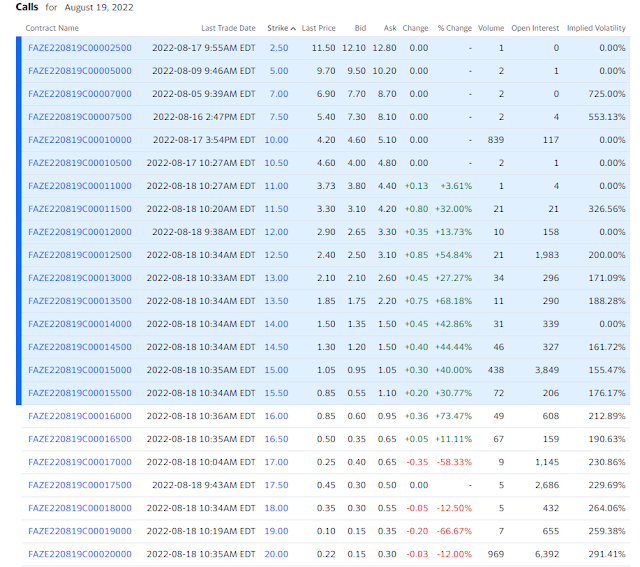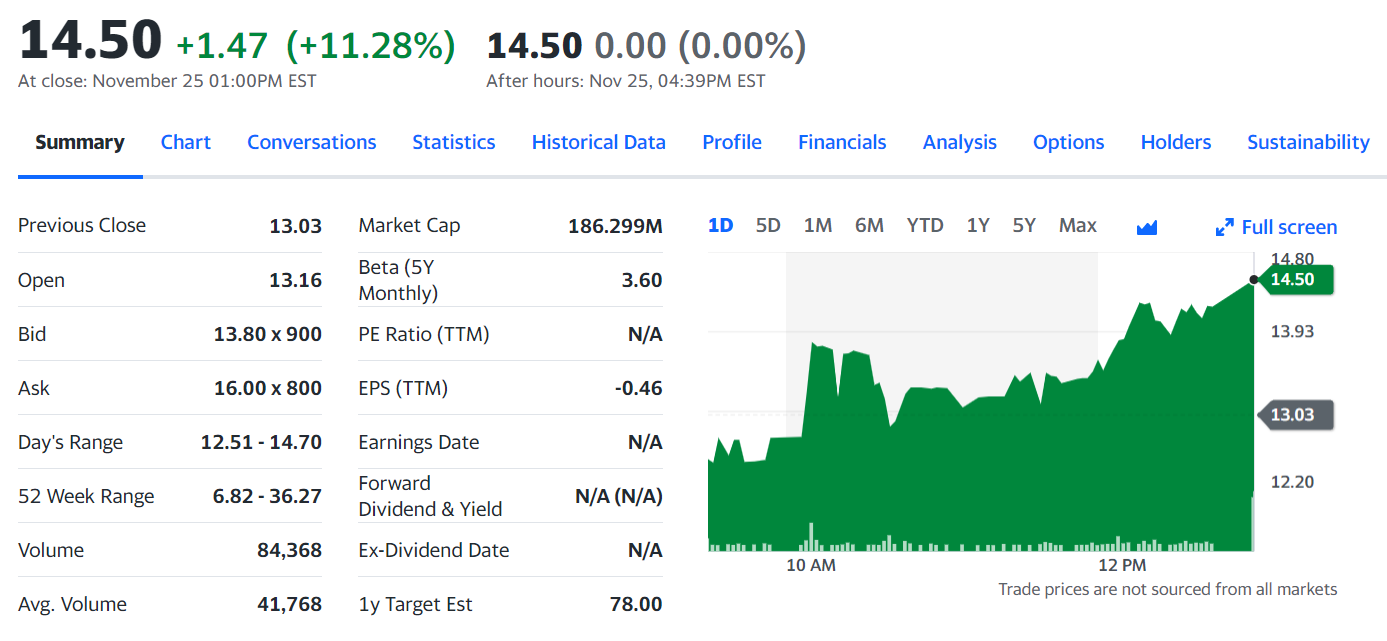Looking for the Next BBBY Squeeze? GETY and FAZE are Ideal Candidates Over the Next Two Days
BBBY touched as high as $30 yesterday but is getting crushed to the $17's in early trading this morning. As traders exit the position, they might be looking for the next possible squeeze runner candidate. GETY and FAZE make two ideal candidates. In fact, if BBBY holders who are hoping for $1,000 or some other very high target sold BBBY and placed the money into GETY or FAZE, they might actually get that type of target on those two stocks because the floats are so small, short interest is high and open interest on call options is large so gamma squeeze potential is there.
A quick background, repeated from our note from last week. GETY and FAZE are two recent de-SPAC listings. Both stocks merged with their SPAC listing at the height of the bear market. As such, they both had an extraordinarily high amount of redemptions as the SPAC investors were running for safety and taking the cash, thinking that both stocks would tank out of the gate like so many other SPACs have done over the past year. That hasn't been the case as both GETY and FAZE are well over the $10 mark. At the same time, shorts piled in assuming that the stocks would tank post merger, but they haven't. They are now stuck until each company files their S-1 on the PIPE shares and they become effective. That's not happening within the next two days in time for option expiry tomorrow.
FAZE has a 1.4 million share float. GETY has a 0.5 million float. Short interest as of July 29th shows just over 1 million for FAZE and 319,000 for GETY. Daily cost to borrow is in the several hundred percent, but shorts who keep an open position are willing to pay that as they are banking on each stock to sink back to $10 once the S-1s are effective. The problem with that is they do not control the timing of when the companies submit their S-1s and when they are deemed effective by the SEC. SPACs generally do have clauses in the PIPE and warrant agreements that state this needs to be done within 30 days of listing. But there is no guarantee that the SEC will deem these S-1s effective by then, plus the 30-day deadline is beyond option expiry for August for both companies so the point is moot anyways.
We have already established that short interest is very high for both stocks. But that alone won't be the driver for the gamma squeeze. It'll be the open interest on the call options. As call options go into the money, call option writers often buy the stock in order to hedge themselves from their negative call option position. This naturally causes a positive feedback cycle where buying increases the price, more call options go into the money at higher and higher strikes which then stimulates further buying to hedge against in-the-money calls.
Let's have a look at the latest call option open interest data, first FAZE:
As FAZE has blasted off up over 10% today, those $15 calls expiring tomorrow are now in the money. At $14 strikes and lower, there are 3,541 in call option open interest, resulting in 354,100 shares locked up in gamma hedging strategies. But the $15 strike price has an additional 3,849 in open interest. It going in the money locks up another 384,900 shares in gamma hedging strategies, especially if those calls are taken to close and shares must be presented to the call option holders. At $16 through $20 strikes, there are 12,283 in open interest, with close to half of that being at the $20 strike and another large batch at the $17 and $17.50 strikes. If those go into the money, you can see how the positive feedback loop can create a large move in the stock price. Those options - assuming they go ITM - will lock up over 1.2 million shares. This chart illustrates the issue here:
If you add up the shares shorted, the ones locked in ITM calls and the potential 1.2 million shares locked in open interest calls that could go ITM up to $20, you get 3 million shares needed, or more than double the float. Even ignoring all OTM calls, the ITM calls and shorts alone cover 130% of the float. This is GME territory, except on a much smaller scale where things can move quickly.
Next is GETY:
GETY has 1,653 in open interest on ITM calls, most of them being at that key $30 mark. The would result in 165,300 shares locked in gamma hedging, a significant amount for a stock with only 508,000 shares in the float. However, the $35 strike has 2,549 in open interest and the $40 strike 6,070 in open interest. This would result in 254,900 shares and 607,000 shares being locked for gamma hedges if they went ITM. Summarizing this:
We see similar type of pattern on GETY as we do on FAZE. The ITM calls and shorts eat up the float while the out of the money calls at $35 and $40 eat up an additional 170% of the float if they go into the money. The gamma squeeze potential is clear for both GETY and FAZE.
FAZE and GETY shareholders should support each other
FAZE and GETY are brother stocks. Both of them are low float SPACs that went de-SPAC within a couple of days of each other. Both of them have a high gamma squeeze potential for the reasons mentioned above. In addition to that, both are very likely to be shorted by the same people. If a short gets a margin call on FAZE, they might have to close off their GETY short to cover off the margin, and vice versa. Imagine having a short position on GETY and FAZE at the same time both spike. It should become clear why you want to be in both stocks, and if you are in just one of the two positions, that you should still cheer for the other.







Comments
Post a Comment